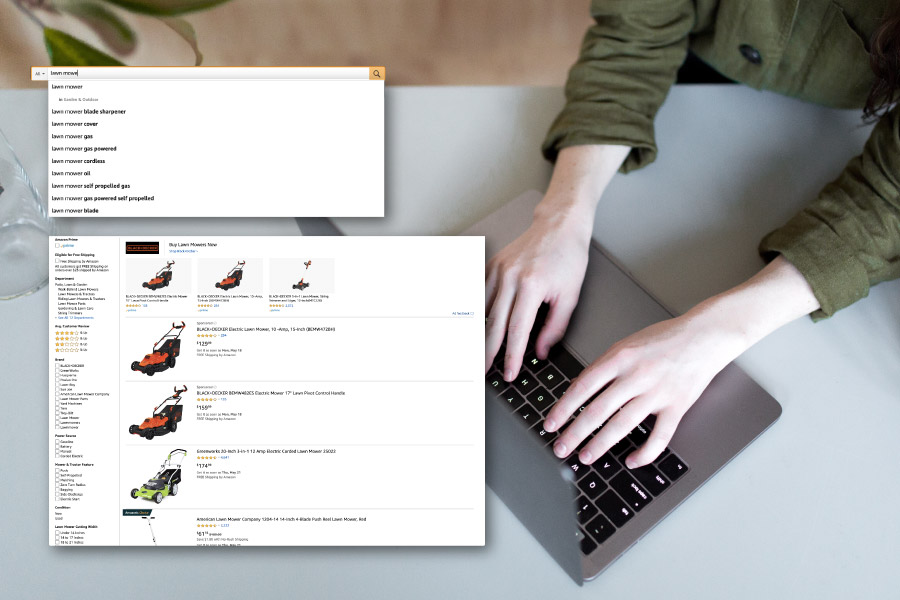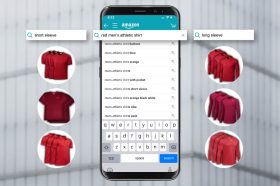Resources - Blog
Amazon PPC: How to Optimally Structure Your Advertising Campaigns

Stay on top of the latest e-commerce and marketplace trends.
44% of brands say Sponsored Products ads drive the highest RoAS on Amazon, followed by Sponsored Brands ads (48%).
Amazon PPC campaigns are a core element of Amazon’s advertising offering and a valuable tool for brands and sellers to drive discoverability and incremental growth on the marketplace. However, there are several aspects of campaign structure management that you need to consider and address — or otherwise risk a suboptimal campaign performance and, ultimately, leave money on the table.
While it could be tempting to simply add all of your products into one, large automatic campaign with a “set it and forget it” approach, it is crucial to ensure that your campaigns are structured correctly from the start and as your campaigns are modified as your business scales.
Certainly, it can be time-consuming as well as error-prone to maintain an optimal campaign structure manually and, in most cases, the structure of manual and automatic campaigns will deviate over time. When the structures of your manual and automatic campaigns do not match, the harvested keywords will often be less applicable and impact the campaigns’ performance.
Below, we break down tips to optimally structure your Amazon PPC campaigns and ensure structure mirroring as your campaigns evolve.
Structuring Campaigns: Open vs. Closed Format
Amazon PPC offers two main ad types at your disposal: Sponsored Products and Sponsored Brands — the latter of which features an open format to both define creative and products to be showcased as well as to define landing pages.
Sponsored Brands ads are prominently positioned at the top of the search page. However, they are more expensive than Sponsored Products ads as well as more difficult to track for attribution. Keyword targeting for Sponsored Brands campaigns is more complex and is usually tightly coupled with the creative and landing pages.
As an open format, Sponsored Brands ads allow you to decide which products should be grouped together in the creative and provides optimal flexibility, which can also make them difficult to design and optimize.
Sponsored Products ads, on the other hand, are a closed format and do now allow the flexibility of custom creatives and landing pages. The advertiser can only select the product to showcase, choose the targeting type, and assign a bid price. Due to its structural simplicity and better ability to track attribution, Sponsored products ads are the most popular ad type on Amazon.
Sponsored Products Campaign Structure
Despite their simplicity, structuring Sponsored Products campaigns is far from trivial. An inaccurately structured campaign could have a disastrous effect on the effectiveness of your advertising strategy and advertising cost of sale (ACoS). The formula for Amazon Sponsored Products ACoS is as follows:
ACoS = total ad spend / total ad sales x 100
With Sponsored Products ads, the higher-priced products can afford a higher advertising spend and higher bids when the targeting is the ACoS. Consider the following example:
- Product A is priced at $10 and bids for a keyword that has a 10% conversion rate. This means the sale converts after every 10 clicks. Assuming a bid price of $1 per click, the ACoS for Product A would be: 10 clicks x $1 / $10 sale = 100%
- If Product B is priced at $20 and bids on the very same keyword, with the same conversion rate of 10%, it will have an ACoS of: 10 clicks x $1 bid / $20 sale = 50%
Assuming the advertiser targets an ACoS of 50%, and assuming the conversion rate is similar, the advertiser can bid $0.50 for Product A and $1 for Product B. Therefore, putting both Product A and Product B in the same ad group would produce suboptimal results, with one of the two products suffering. Rather, if Product A and Product B are allocated to different ad groups, they can each have more accurate bids.
The conversion rate is another aspect to consider. In addition to a different target ACoS, the conversion rate for these products could also differ. Let’s assume that Product A has a 10% conversion rate and Product B has a 7% conversion rate.
If the advertiser wants a 50% ACoS, then Product A should bid at $0.50 for that keyword:
ACoS x Sale Price x Conversion Rate = Bid Price
- For Product A, it would be: 50% x $10 x 10% = $0.50
- For Product B, the bid should be: 50% x $20 x 7% = $0.70
In most cases, the product group — which includes the parent product and its variations — are similarly priced and often exhibit similar keyword conversion rates. Therefore, it makes sense to assign each product group a dedicated ad group.
Final Thoughts
Structuring products into proper ad groups can have a substantial impact on the campaign performance. It allows you to execute more precise and granular bidding, while accounting for differences in pricing and conversion rates between various products.
To ensure campaigns are properly structured, Feedvisor’s next-generation, “AI-first” platform for Amazon Advertising constantly monitors the structure of campaigns and ad groups, identifies inefficiencies, and alerts the advertiser about any structural issues so you can detect structural inefficiencies and enable the AI technology to autonomously resolve them with the click of a button.
Learn what Feedvisor can do for your business.
When you partner with Feedvisor, you automatically receive access to our true, AI-driven technology and hands-on team of e-commerce experts. Contact one of our team members today to learn more about our end-to-end solution for brands and large sellers on Amazon, Walmart, and e-marketplaces.




